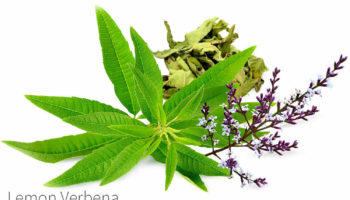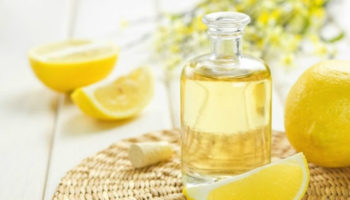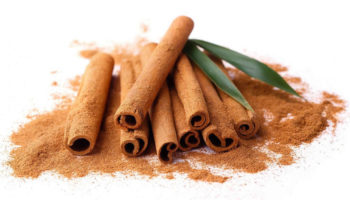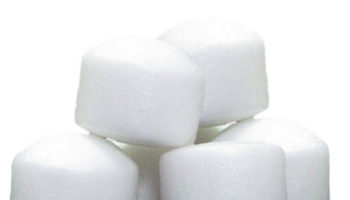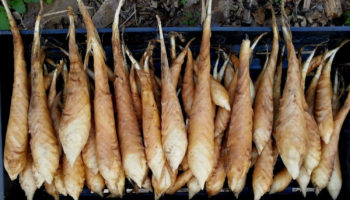Contents
What is neem
Neem (Azadirachta indica) is commonly known as Indian lilac, is a tree in the mahogany family Meliaceae. Neem is one of two species in the genus Azadirachta and is native to the Indian subcontinent, i.e. India, Nepal, Pakistan, Bangladesh, Sri Lanka, and Maldives. Neem typically is grown in tropical and semi-tropical regions, their large size and preference for wet areas. Neem trees now also grow in islands located in the southern part of Iran. Its fruits and seeds are the source of neem oil.
These features describe the habit of neem plant:
- fast growing tree can grow 12 to 24m high
- compound leaves 20 to 40cm long, made up of 20 to 30 leaflets and leaflets between 3 to 8cm long. Neem leaflets are vibrant yellowy green with distinctive toothed margins.
- Neem fruit are green, ripening to yellow. Neem fruits are similar to olives in size and shape.
All the parts of neem tree is commonly used in traditional Indian medicine for household remedy against various human diseases as well as pest control 1, 2, 3. Neem-based pesticides are now extensively used in agriculture practices all over the world. It contains azadirachtin, which is a predominant insecticidal active ingredient, having antefeedent, ovipositional deterrence repellency, growth disruption, sterility and larvicidal action against insects 4. There are various reports of control of mosquito breeding under field conditions. An emulsion of neem oil in water was found to be effective in controlling breeding of Culex quinquefasciatus (mosquito vector of Japanese encephalitis virus), Anopheles stephensi (mosquito vector of malaria in urban India) and Aedes aegypti larvae (larvae of the mosquito vector of Yellow fever virus & Dengue fever) in pools, tanks and coolers up to 2 to 3 weeks 5, whereas an application of neem cake powder resulted in drastic reduction in the late instar larvae and pupae of culicine mosquitoes in paddy field 6.
For centuries, millions of Indian have cleaned their teeth with neem twigs, smeared skin disorders with neem leaf juice, taken neem tea as a tonic, and placed neem leaves in their beds, books, grain bins, cupboards, and closets to keep away troublesome bugs. The tree has relieved so many different pains, fevers, infections, and other complaints so that it has been called “the village pharmacy” 7. In rural India, peoples often used water decoction of neem leaves for the prevention and treatment of various ailments.
Bioactive compounds in neem include: nimbidin, nimbolide, gedunin, mahmoodin, flavonoids, tannins, and alkaloids. These phytochemicals act on bacterial cell wall by binding to adhesins forming complex causing inactivation of proteins and cell function 8. Nimbidin has anti-inflammatory, anti-arthritic, antipyretic, hypoglycemic, and anti-bacterial property 9. It is active against Klebsiella, Staphylococcus, and Serratia species. It is also active against Streptococcus mutans and Streptococcus faecalis 10.
Neem is commonly seen as a medicinal tree and versatile plant having a wide spectrum of biological activities. Various studies have been put forward on its antimicrobial properties. A study by Elavarasu et al 11 stated that neem oil was effective by reducing the growth of the plaque-causing microorganisms. Bohora et al 12 found that neem extract showed significant antimicrobial effect against Enterococcus faecalis and Candida albicans. But a study by Kumar and Sidhu 13 stated that neem extract was ineffective and did not inhibit the growth of Enterococcus faecalis; similar negative result was obtained in another study 14.
Neem Weed status
Neem is considered a weed in many areas, including some parts of the Middle East, most of Sub-Saharan Africa including West Africa and Indian Ocean states, and some parts of Australia 15.
Figure 1. Neem
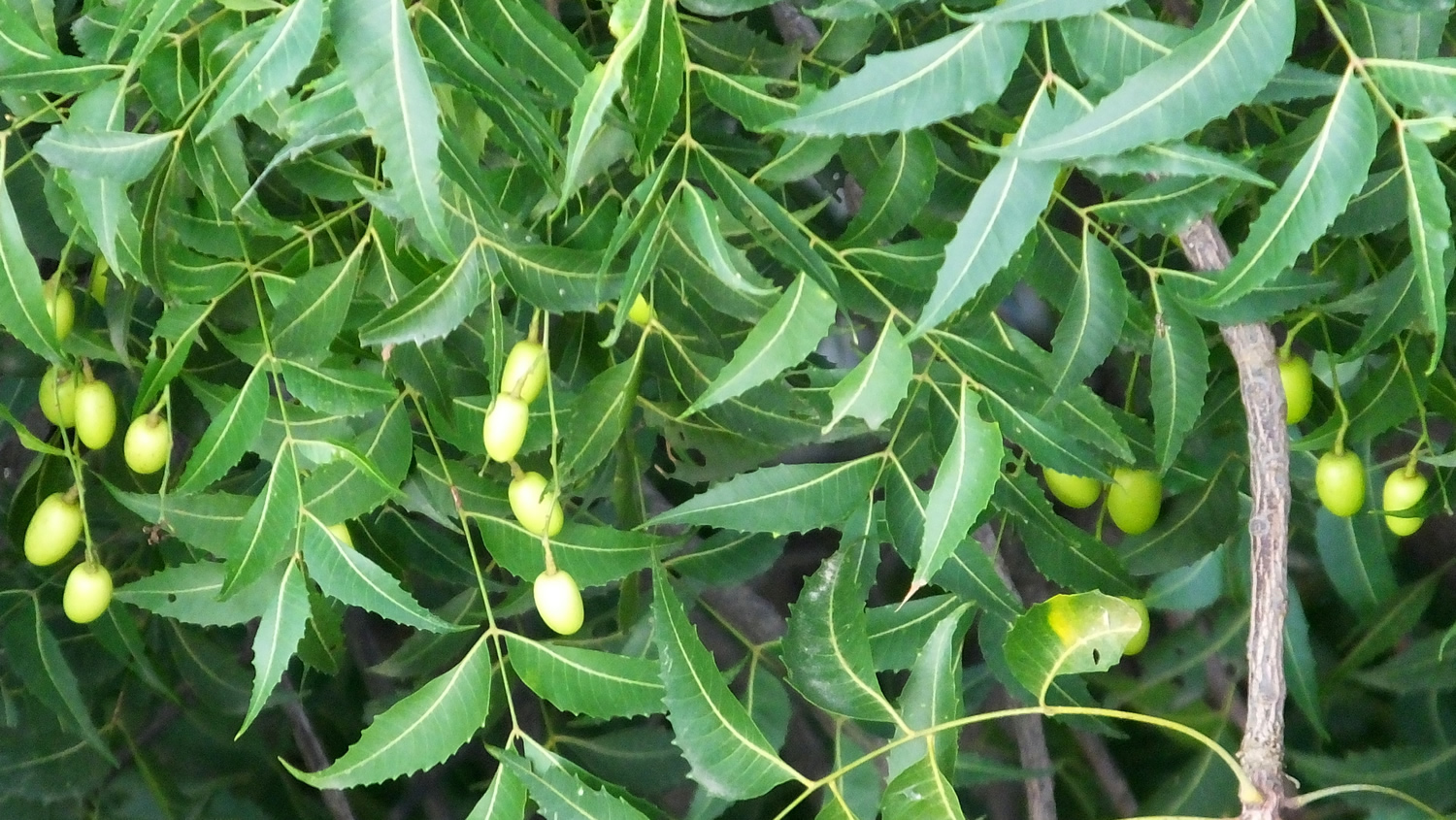
Neem Uses
Neem leaves are dried in India and placed in cupboards to prevent insects eating the clothes, and also in tins where rice is stored. Neem leaves are dried and burnt in the tropical regions to keep away mosquitoes. These flowers are also used in many Indian festivals like Ugadi. As an ayurvedic herb, neem is also used in baths.
As a vegetable
The tender shoots and flowers of the neem tree are eaten as a vegetable in India. A souplike dish called Veppampoo charu (Tamil) (translated as “neem flower rasam”) made of the flower of neem is prepared in Tamil Nadu. In Bengal, young neem leaves are fried in oil with tiny pieces of eggplant (brinjal). The dish is called nim begun and is the first item during a Bengali meal that acts as an appetizer. It is eaten with rice.
Neem is used in parts of mainland Southeast Asia, particularly in Cambodia, Laos (where it is called kadao), Thailand (where it is known as sadao or sdao), Myanmar (where it is known as tamar) and Vietnam. Even lightly cooked, the flavour is quite bitter and the food is not enjoyed by all inhabitants of these nations, though it is believed to be good for one’s health. In Myanmar, young neem leaves and flower buds are boiled with tamarind fruit to soften its bitterness and eaten as a vegetable. Pickled neem leaves are also eaten with tomato and fish paste sauce in Myanmar.
Head lice
An anti-louse shampoo (Licener®) based on a neem seed extract was tested in vivo and in vitro on its efficacy to eliminate head louse infestation by a single treatment. The hair of 12 children being selected from a larger group due to their intense infestation with head lice were incubated for 10 min with the neem seed extract-containing shampoo 16. It was found that after this short exposition period, none of the lice had survived, when being observed for 22 h. In all cases, more than 50-70 dead lice had been combed down from each head after the shampoo had been washed out with normal tap water. A second group of eight children had been treated for 20 min with identical results. Intense combing of the volunteers 7 days after the treatment did not result in the finding of any motile louse neither in the 10-min treated group nor in the group the hair of which had been treated for 20 min. Other living head lice were in vitro incubated within the undiluted product (being placed inside little baskets the floor of which consisted of a fine net of gauze). It was seen that a total submersion for only 3 min prior to washing 3× for 2 min with tap water was sufficient to kill all motile stages (larvae and adults). The incubation of nits at 30°C into the undiluted product for 3, 10, and 20 min did not show differences. In all cases, there was no eyespot development or hatching larvae within 7-10 days of observation. This and the fact that the hair of treated children (even in the short-time treated group of only 10 min) did not reveal freshly hatched larval stages of lice indicate that there is an ovicidal activity of the product, too.
Other uses
Insufficient evidence to rate effectiveness for:
- Skin diseases such as psoriasis, eczema, alopecia, diabetic ulcer, warts, vitiligo, pemphigus, pompholyx, leprosy, and many other more very common and rare diseases.
- Antisnake venom activity
- Digestive disorders
- Anticarcinogenic activity
- Antioxidant effect
- Anti-inflammatory activity
- Sexually transmitted disease
- Immune system
- Antiviral
- Antibacterial activity
Studies in human are to rate the effectiveness of neem or neem oil for these uses.
What is neem oil
Neem oil (margosa oil) is a vegetable oil obtained from the seed kernels of Neem tree (Azadirachta indica). Neem oil is deep yellow in color and has garlic–like odor. It contains active ingredients like azadirachtin, nimbin, picrin, and sialin.
Neem oil, as a traditional medical remedy, is used as anti-bacterial, anti-fungal, insect repellent, and treatment of skin diseases. Traditional routes of administration of Neem extracts included oral, vaginal, and topical use. Neem oil comprises mainly triglycerides, steroids (campesterol, beta-sitosterol, stigmasterol) and many triterpenoids, of which azadirachtin is the most well-known and studied. The azadirachtin content of neem oil varies from 300 ppm to over 2500 ppm, depending on the extraction technology and quality of the neem seeds crushed.
What is neem oil used for
One of the most extensively used “natural” plant derived insecticides is neem 4. The pesticide action of neem oil is attributed to azadirachtin, which is used as an insecticide for arthropod pests 17. Commercially available neem based insecticides are used to control many crop pests and this is considered as a “green” approach to pest control, permitted in organic production systems 18.
Neem oil was shown to be toxic to Anopheles stephensi (mosquito vector of malaria in urban India), Culex quinquefasciatus (mosquito vector of Japanese encephalitis virus) and Aedes aegypti larvae (larvae of the mosquito vector of Yellow fever virus & Dengue fever) with median lethal concentrations (LC50) of 1.6, 1.8 and 1.7 ppm respectively 19. The neem oil formulation tested by Dua and co-workers 19 was also found to be effective in controlling mosquito larvae under natural field conditions, which could be used as an alternative for malaria control.
Recently, entomopathogenic fungi have been formulated in neem oil and tested against larval and adult An. gambiae and adult C. quinquefasciatus 20. The results showed that the formulation of fungus + neem was more effective than neem alone for adults and larvae. The “formulation” of fungus in water was not as effective as fungus formulated in neem oil against adults, although larvae were not exposed to formulations of fungus without neem 20.
An emulsion of neem oil in water was found to be effective in controlling breeding of Culex quinquefasciatus, Anopheles stephensi and Aedes aegypti in pools, tanks and coolers up to 2 to 3 weeks 5, whereas an application of neem cake powder resulted in drastic reduction in the late instar larvae and pupae of culicine mosquitoes in paddy field 6.
Table 1. Larvicidal activity of neem oil formulation against mosquito in laboratory
| Species | Larvicidal activity (ppm) | |
| LC50 (Mean ± sd) | LC90 (Mean ± sd) | |
| Anopheles stephensi | 1.6 ± 0.4 (1.1 – 2.5)* | 3.4 ± 0.5 (2.7 – 4.0) |
| Culex quinquefasciatus | 1.8 ± 0.5 (1.2 – 2.6) | 3.5 ± 0.6 (2.8 – 4.2) |
| Aedes aegypti | 1.7 ± 0.3 (1.3 – 2.1) | 3.7 ± 0.5 (3.1 – 4.3) |
Water depth: 2.5 cm; * 95% confidence limits; Number of replicates: 5
Table 2. Larvicidal activity of neem oil formulation against mosquitoes larvae in field
| Mosquito species | Breeding sites | Pre treatment density | Percent reduction of larval density (mean ± sd) | |||||
| Day-1 | Day-2 | Day-3 | Week-1 | Week-2 | Week-3 | |||
| Culex | Pits | 28.9 ± 10.6 | 95.9 ± 3.5 | 90.2 ± 6.9 | 87.2 ± 11.0 | 87.5 ± 8.2 | 85.9 ± 8.0 | 80.5 ± 7.3 |
| Tanks | 26.8 ± 11.5 | 91.9 ± 5.8 | 93.2 ± 3.2 | 97.7 ± 1.9 | 92.4 ± 8.0 | 86.2 ± 8.2 | 80.7 ± 9.2 | |
| Drains | 115.7 ± 64.6 | 99.4 ± 0.6 | 98.8 ± 1.2 | 98.6 ± 1.4 | 84.9 ± 4.6 | 85.0 ± 11.8 | 77.8 ± 11.0 | |
| 95.5 ± 4.1 | 94.1 ± 4.3 | 94.5 ± 5.5 | 89.9 ± 2.5 | 85.7 ± 0.8 | 79.7 ± 1.6 | |||
| Anopheles | Pits | 13.5 ± 7.5 | 96.2 ± 4.5 | 100 | 100 | 100 | 85.4 ± 14.1 | 76.6 ± 9.6 |
| Tanks | 10.4 ± 5.7 | 98.2 ± 1.8 | 100 | 100 | 100 | 87.0 ± 9.7 | 77.7 ± 10.0 | |
| Drains | 13.0 ± 6.7 | 100 | 100 | 100 | 100 | 98.7 ± 1.3 | 97.0 ± 3.0 | |
| 98.1 ± 1.9 | 100 | 100 | 100 | 90.4 ± 7.2 | 83.8 ± 11.5 | |||
Table 3. Larvicidal activity of neem oil formulation against Aedes mosquitoes in field
| Breeding sites | Pre treatment larval density | pH | Percent reduction of larval density (Mean ± sd) | |||
| Day-1 | Day-2 | Day-3 | Day-7 | |||
| Tyres | 10.3 ± 4.1 | 8.0–9.0 | 94.3 ± 4.5 | 98.6 ± 1.4 | 100 | 100 |
| Machinery scraps | 14.5 ± 8.6 | 8.0–9.0 | 96.0 ± 3.0 | 100 | 100 | 100 |
| Iron container | 19.2 ± 5.7 | 8.5 | 98.1 ± 1.5 | 100 | 100 | 100 |
| Iron box | 11.0 ± 6.0 | 8.0–8.5 | 96.9 ± 2.0 | 100 | 100 | 100 |
| Iron tanks | 9.0 ± 2.6 | 8.0–8.5 | 85.2 ± 6.5 | 100 | 100 | 100 |
| Plastic scrap | 6.0 | 8.5 | 100 | 100 | 100 | 100 |
| 95.1 ± 5.2 | 99.7 ± 0.3 | 100 | 100 | |||
Total replicates: 21
Neem oil poisoning
Neem oil has widespread use in Indian subcontinent due to its many bioactive properties. Neem oil poisoning is rare in adults. In children, neem oil is reported to cause toxic encephalopathy and Reye’s–like syndrome 21. Azadirachtin (C35H44O16), a complex tetranortriterpenoid, is implicated in causing the effects seen in neem oil poisoning 22. Azadirachtin manifests its toxicity possibly by interfering with mitochondrial bioenergetics, resulting in inhibition of the generation of the electrochemical proton gradient (primary form of energy generated in mitochondria). Acute poisoning with inhibitors of electron transporting complexes causes symptoms such as muscle weakness, easy fatigability, hypotension, headache, facial flushing, nausea, confusion, and aggravation of latent myocardial angina. The inability to utilize oxygen is manifested as a cytotoxic hypoxia wherein the chemicals cause a metabolic acidosis and hyperpnea, despite normal pO2.
In children, there are several case reports of Neem oil poisoning causing vomiting, hepatic toxicity, metabolic acidosis, and encephalopathy 23. Lai et al. 24, reported 22 cases of neem oil poisoning in infants, who were given single doses of Neem oil (few drops to 5 ml), presented with features of toxic encephalopathy, metabolic acidosis, and hepatic toxicity. The infants recovered completely with supportive treatment 24. Sundaravalli et al. 23, in a case series of 12 children with neem oil poisoning, who were given single dose of Neem oil (25-60 ml), reported fatality in 10 cases with features of toxic encephalopathy and metabolic acidosis. Sinnaih et al. 21, reported Reyes–like syndrome in fatal cases of Neem oil poisoning in a case series of 13 children.
In adults, there are few case reports of Neem poisoning. A case report of neem oil poisoning involving a 73-year-old male who presented with vomiting, seizures, metabolic acidosis, and toxic encephalopathy – 1 hour after accidental ingestion of 20 ml of Neem oil 25. The patient recovered completely with symptomatic treatment. Iyyaduria et al. 22, reported a case of a 35-year-old female with suicidal poisoning, who presented after ingestion of 250 ml of Neem pesticide with encephalopathy and metabolic acidosis with no evidence of hepatic and renal complications. She recovered completely with supportive management. Bhasker et al. 26, reported a 35-year-female with Neem oil poisoning who presented with bilateral visual loss. Cranial MR imaging, showed symmetrical altered signal intensity bilaterally in the putamen region with extension to the posterior limb of the internal capsule. Laboratory findings were within normal limits, and she recovered completely with supportive management.
There is no specific antidote available, and gastric lavage is not recommended for Neem oil poisoning. The management is primarily symptomatic and recovery is usually complete 27.
What is Reye Syndrome
Reye syndrome is a rare illness that can affect the blood, liver, and brain of someone who has recently had a viral infection 28. It always follows another illness. Although it mostly affects children and teens, anyone can get it. It can develop quickly and without warning. It is most common during flu season.
Symptoms include
- Nausea and vomiting
- Listlessness
- Personality change – such as irritability, combativeness or confusion
- Delirium
- Convulsions
- Loss of consciousness
If these symptoms occur soon after a viral illness, seek medical attention immediately. Reye syndrome can lead to a coma and brain death, so quick diagnosis and treatment are critical. Treatment focuses on preventing brain damage. There is no cure.
Neem oil allergic contact dermatitis
Allergic contact dermatitis from neem oil has been described previously in 3 patients 29. The allergen(s) is/are unknown.
Summary
Neem has been used as an herbal medication since ancient times, is still popular today and probably will continue to be used in the future because it contains various bioactive phytochemicals that could provide therapeutic effects.
Establishing whether or not therapeutic effects of neem are beneficial to patients will require good clinical research and generation of scientific evidence. There is a need for continued efforts that focuses on various diseases, which are then validated in clinical trials that will help in developing neem as a promising therapeutic agent. Without such evidence, it will remain unclear whether these untested and unproven medical treatments are truly beneficial. It is advisable that the discriminate and proper use of neem preparations could be safe and provide therapeutic benefits however the indiscriminate or improper use can be unsafe and harmful- e.g. neem current use as pesticide and to kill mosquitos larvae.
- Drabu S, Khatri S, Babu S. Neem: Healer of All Ailments. Res J Pharm Biol Che Sci. 2012;3:120–6.[↩]
- Botelho MA, Santos RA, Martins JG, Carvalho CO, Paz MC, Azenha C, et al. et al. Efficacy of a mouth rinse based on leaves of the neem tree (Azadirachta indica) in the treatment of patients with chronic gingivitis: A double blind, randomized, controlled trial. J Med Plant Res. 2008;2(11):341–346.[↩]
- National Research Council . Report of an adhoc panel of the Board on Science and Technology for International Development. National Academy Press, Washington, DC; 1992. Neem: a tree for solving global problems.[↩]
- Properties and potential of natural pesticides from the neem tree, Azadirachta indica. Schmutterer H. Annu Rev Entomol. 1990; 35():271-97. https://www.ncbi.nlm.nih.gov/pubmed/2405771/[↩][↩]
- Efficacy of neem oil-water emulsion against mosquito immatures. Batra CP, Mittal PK, Adak T, Sharma VP. Indian J Malariol. 1998 Mar; 35(1):15-21. https://www.ncbi.nlm.nih.gov/pubmed/10319557/[↩][↩]
- Evaluation of neem, Azadirachta indica, with and without water management, for the control of culicine mosquito larvae in rice-fields. Rao DR, Reuben R, Venugopal MS, Nagasampagi BA, Schmutterer H. Med Vet Entomol. 1992 Oct; 6(4):318-24. https://www.ncbi.nlm.nih.gov/pubmed/1463896/[↩][↩]
- Kumar VS, Navaratnam V. Neem (Azadirachta indica): Prehistory to contemporary medicinal uses to humankind. Asian Pacific Journal of Tropical Biomedicine. 2013;3(7):505-514. doi:10.1016/S2221-1691(13)60105-7. https://www.ncbi.nlm.nih.gov/pmc/articles/PMC3695574/[↩]
- Farooqui NA, Dey A, Singh GN, Easwari TS. Antibacterial potential of Nimbolide from Azadirachtaindica. . Int J Pharm Pharm Sci. 2014 May;6(5):636–638.[↩]
- Biswas K, Chattopadhyay I, Banerjee RK, Bandyopadhyay U. Biological activities and medicinal properties of neem (Azadirachta indica) Cur Scien. 2002;8:1336–45.[↩]
- Subapriya R, Nagini S. Medicinal properties of neem leaves: A review. J Ethnopharmacol. 2003;88:107–11.[↩]
- Elavarasu S, Abinaya P, Elanchezhiyan S, Thangakumaran , Venilla K, Naziya KB. Evaluation of anti-plaque microbial activity of Azadirachtaindica (neem oil) in vitro: a pilot study. J Pharm Bioallied Sci. 2012 Aug;4(Suppl 2):S394–S396. https://www.ncbi.nlm.nih.gov/pmc/articles/PMC3467930/[↩]
- Bohora A, Hegde V, Kokate S. Comparison of the antibacterial efficiency of neem leaf extract and 2% sodium hypochlorite against E faecalis, C albicans and mixed culture—an in vitro study. Endodontology. 2010;22(1):10–14.[↩]
- Kumar D, Sidhu P. The antimicrobial activity of Azardirachta indica, Glycyrrhiza glabra, Cinnamum zeylanicum, Syzygium aro-maticum, Accacia nilotica on Streptococcus mutans and Enterococcus faecalis—an in vitro study. Edit Orig Res. 2011;23(1):18–25.[↩]
- Hugar S, M Patel P, Nagmoti J, Uppin C, Mistry L, Dhariwal N. An in vitro Comparative Evaluation of Efficacy of Disinfecting Ability of Garlic Oil, Neem Oil, Clove Oil, and Tulsi Oil with autoclaving on Endodontic K Files tested against Enterococcus faecalis. International Journal of Clinical Pediatric Dentistry. 2017;10(3):283-288. doi:10.5005/jp-journals-10005-1451. https://www.ncbi.nlm.nih.gov/pmc/articles/PMC5661044/[↩]
- Neem. https://nt.gov.au/environment/weeds/list-of-declared-weeds-in-the-nt/neem[↩]
- Efficacy of a single treatment of head lice with a neem seed extract: an in vivo and in vitro study on nits and motile stages. Parasitol Res. 2012 Jan;110(1):277-80. doi: 10.1007/s00436-011-2484-3. Epub 2011 Jun 11. https://link.springer.com/article/10.1007%2Fs00436-011-2484-3[↩]
- Dhongade RK, Kavade SG, Damle RS. Neem oil poisoning. Indian Pediatr 2008;45:56–57. https://www.ncbi.nlm.nih.gov/pubmed/18250509[↩]
- Gomes SA, Paula AR, Ribeiro A, et al. Neem oil increases the efficiency of the entomopathogenic fungus Metarhizium anisopliae for the control of Aedes aegypti (Diptera: Culicidae) larvae. Parasites & Vectors. 2015;8:669. doi:10.1186/s13071-015-1280-9. https://www.ncbi.nlm.nih.gov/pmc/articles/PMC4696216/[↩]
- Larvicidal activity of neem oil (Azadirachta indica) formulation against mosquitoes. Dua VK, Pandey AC, Raghavendra K, Gupta A, Sharma T, Dash AP. Malar J. 2009 Jun 8; 8():124. https://www.ncbi.nlm.nih.gov/pmc/articles/PMC2702347/[↩][↩][↩][↩][↩]
- Seye F, Ndione D, Touré M, Ndiaye M, Boukraa S, Bawin T, Zimmer J-Y, Francis F. Laboratory and semi-field environment tests for the control efficacy of Metarhizium anisopliae formulated with neem oil (suneem) against Anopheles gambiae s.l. adult emergence. Acad J Biotech. 2013;1:046–052.[↩][↩]
- Margosa oil poisoning as a cause of Reye’s syndrome. Sinniah D, Baskaran G. Lancet. 1981 Feb 28; 1(8218):487-9. https://www.ncbi.nlm.nih.gov/pubmed/6110100/[↩][↩]
- Azadirachtin poisoning: a case report. Iyyadurai R, Surekha V, Sathyendra S, Paul Wilson B, Gopinath KG. Clin Toxicol (Phila). 2010 Oct; 48(8):857-8. https://www.ncbi.nlm.nih.gov/pubmed/20932102/[↩][↩]
- Neem oil poisoning. Sundaravalli N, Raju BB, Krishnamoorthy KA. Indian J Pediatr. 1982 May-Jun; 49(398):357-9. https://www.ncbi.nlm.nih.gov/pubmed/7141505/[↩][↩]
- Margosa oil poisoning as a cause of toxic encephalopathy. Lai SM, Lim KW, Cheng HK. Singapore Med J. 1990 Oct; 31(5):463-5. https://www.ncbi.nlm.nih.gov/pubmed/2259944/[↩][↩]
- Mishra A, Dave N. Neem oil poisoning: Case report of an adult with toxic encephalopathy. Indian Journal of Critical Care Medicine : Peer-reviewed, Official Publication of Indian Society of Critical Care Medicine. 2013;17(5):321-322. doi:10.4103/0972-5229.120330. https://www.ncbi.nlm.nih.gov/pmc/articles/PMC3841499/[↩]
- MR imaging findings of neem oil poisoning. Bhaskar MV, Pramod SJ, Jeevika MU, Chandan PK, Shetteppa G. AJNR Am J Neuroradiol. 2010 Aug; 31(7):E60-1. http://www.ajnr.org/content/31/7/E60.long[↩]
- Neem oil poisoning. Dhongade RK, Kavade SG, Damle RS. Indian Pediatr. 2008 Jan; 45(1):56-7. https://www.ncbi.nlm.nih.gov/pubmed/18250509/[↩]
- Reye syndrome. https://medlineplus.gov/reyesyndrome.html[↩]
- Contact Allergy to Neem Oil. http://journals.lww.com/dermatitis/Abstract/publishahead/Contact_Allergy_to_Neem_Oil.99783.aspx[↩]
